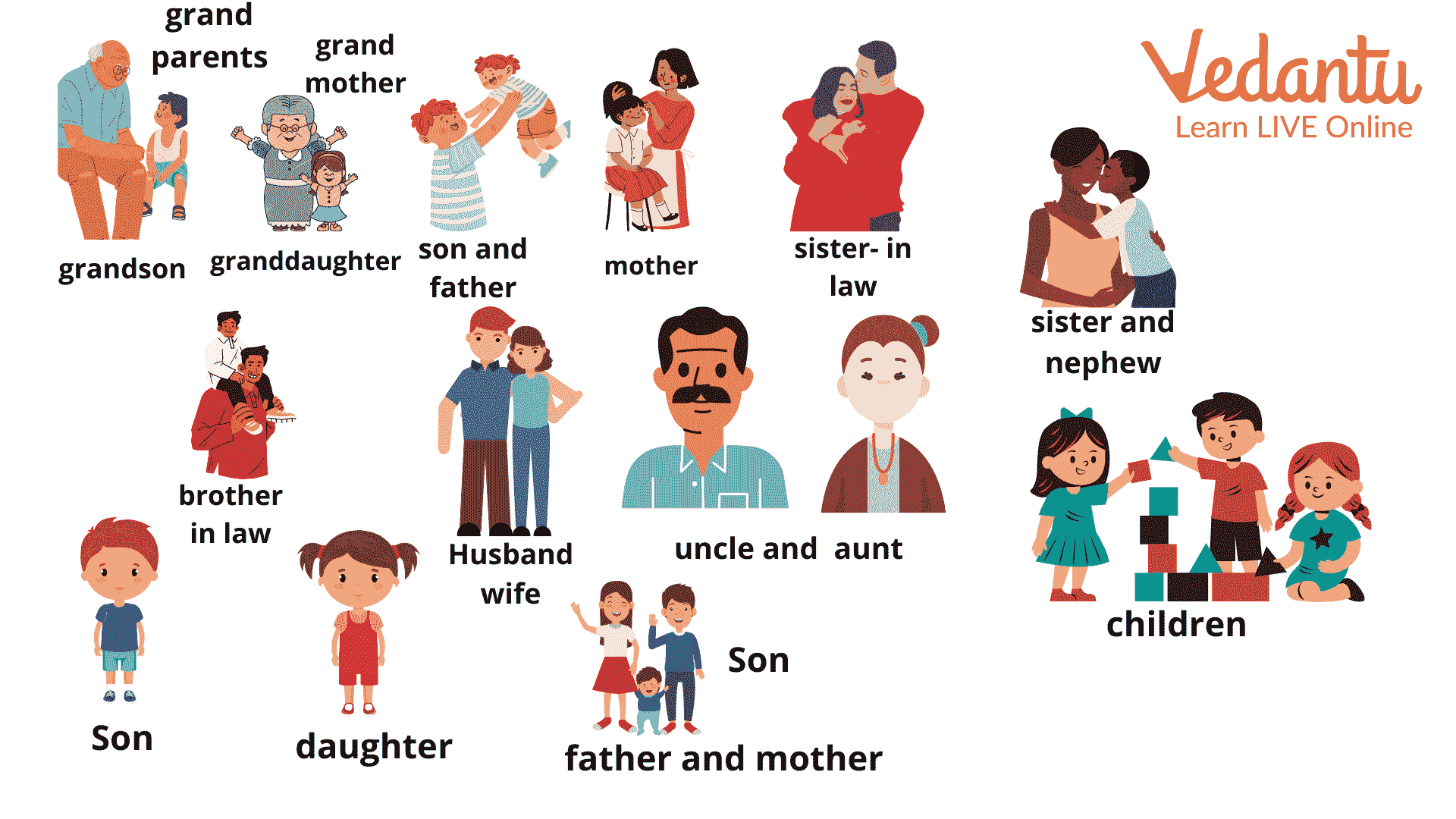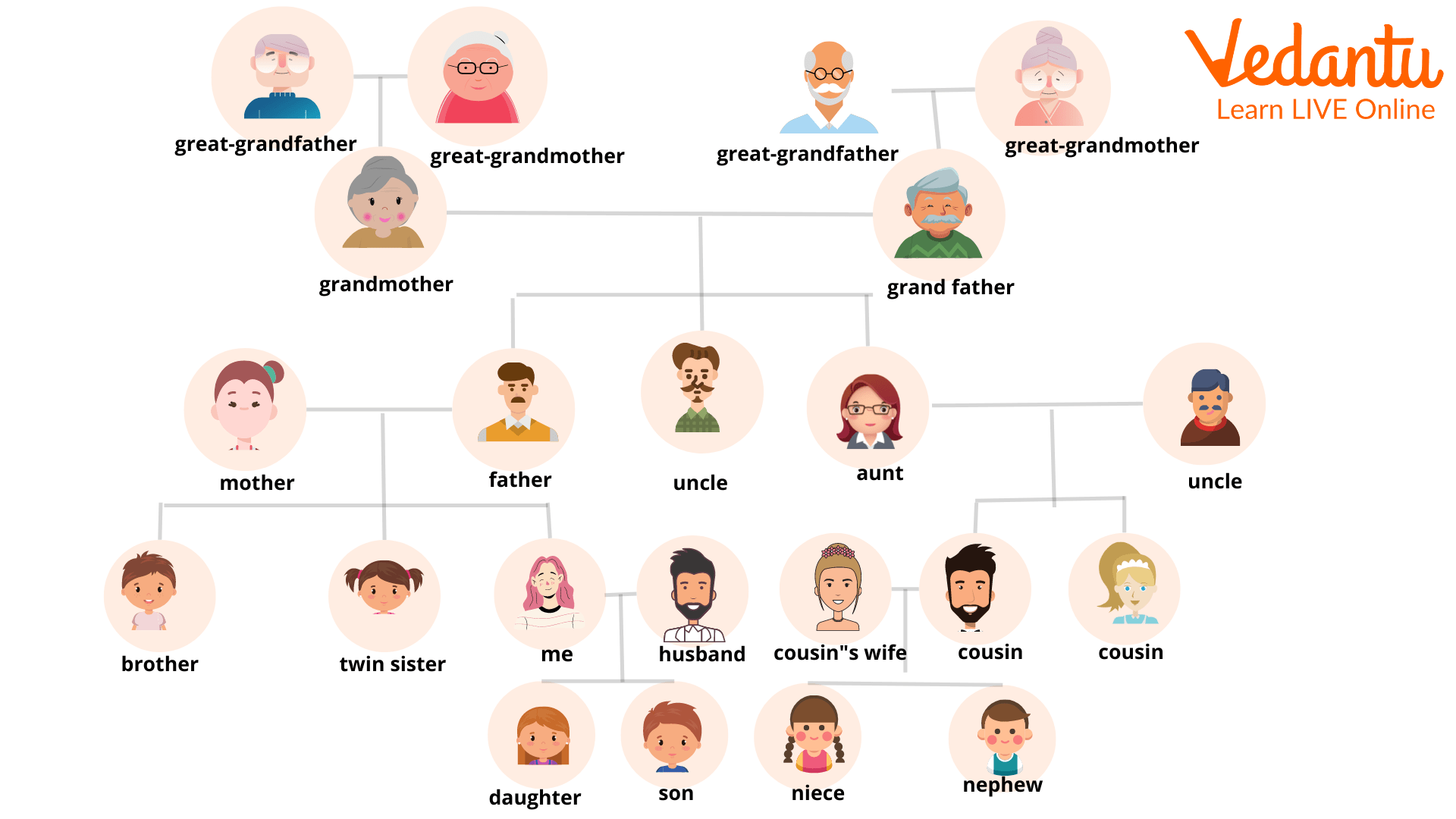




Family and Names of Relations That Kids Must be Taught
When a kid hears the word ‘family’, what springs immediately to their mind? Perhaps visions of people getting together to celebrate holidays and other key events, or scents of home-cooked food, recollections of talks or disputes with near and dear ones, sentiments of love, joy, or grief. Family members have a vital role in people's lives. Families play a crucial role in the growth and well-being of an individual, especially when it comes to young children.
A family is made up of two or more people who are linked by biological, adoption, marriage, or strong emotional ties. Families may appear to be very different from one another, but they are usually very close. Family members have immense love and care for one another.
In this article, we have included names of various family relations in English in an easy-to-understand manner. We hope this would help kids to understand some new words and appreciate the family.
Names of Relations in a Family
Everyone is a part of someone’s family and we generally have many members in our family. Have you ever wondered how we address these individuals? Well, every relation in a family has a name. Be it a nuclear family, a joint family, a single parent or an extended family, it is important to know the various people we are related to. This would ensure we respect and address them appropriately. Let us look into some of the names of relations in a family.
Father
Mother
Son
Daughter
Husband
Wife
Brother
Sister
Grandfather
Grandmother
Grandson
Uncle
Aunt
Nephew
Niece
Cousins

Family Members
Relations Between Family Members
As we have learnt the names of relations, let us understand the relations between family members.
Father- He is the male parent of the child. Kids lovingly call their father dad, daddy and papa.
Mother- The bond between a mother and child is irreplaceable. She is the female parent of the kid.
Children- A kid if he identifies as a boy is known as a son, whereas female kids are known as daughters.
Siblings- Sisters and brothers are known as the siblings.
Grandparents- The mother and father of our parents are known as grandparents. The father of our parents is known as grandfather, whereas the mother is known as a grandmother.
Aunt- The sister of our parents is known as an aunt.
Uncle- The brothers of our parents are known as uncles.
Nephew- The son of our brother or sister, or the son of spouses’ siblings is known as a nephew.
Niece- The daughter of our brother or sister, or the daughter of spouses’ siblings is known as a nephew.
The concepts of names of relations in a family can be better understood by the family tree mentioned below. The family tree depicts the distribution of each family member within the family structure.

The Family Tree
Conclusion
Close family members are the earliest role models for children. As a result, the family plays a crucial role in the children's future. Children's views of the world and their surroundings are shaped by their family ties, which also provide them with the tools they need to succeed in life. It's fun for kids to learn about their ancestors through their grandparents' stories, or to figure out how extensive their family tree is by counting how many aunts, uncles, and cousins they have.
In conclusion, we hope to have aided in learning the names and relationships of family members, as this not only helps the children with their own family relationships, but also with their instructors, friends, and other people in their lives.
FAQs on Names of Relations for Kids in English
1. Why is it important to plan activities with family?
Family has a huge impact on the overall development of a kid. The time spent with family shapes the thinking and nature of a kid. Family activities help youngsters form links with their immediate family members, which are essential for a good social life later in life. As a result, kids can have a sense of belonging as they grow up by learning about others who are linked to them.
2. Plan an activity to teach the names of relations for kids.
Learning the names of relations is a natural process as the kids interact with different family members. A fun activity that can be used to teach the names of relations is to print a family tree with some of the names missing. Parents can ask their children to fill in the blanks. They should also ask kids to introduce family members to their friends and other relatives. This will help kids to know the names as well as help in paving a path for public speaking.









